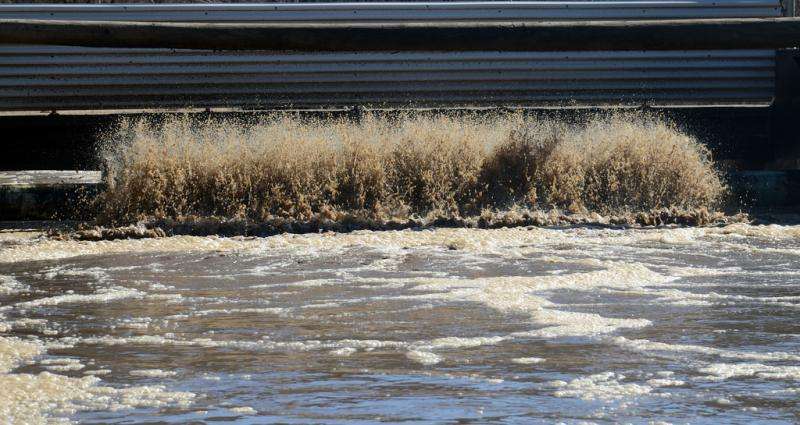Starved-out bacteria aid in wastewater treatment

Scientists have adapted a process normally used to make bioplastic, to remove carbon from wastewater, slashing the amount of energy needed for the treatment process.
The method was developed by Murdoch University PhD student Raphael Flavigny who says in conventional treatments the bacteria in wastewater is aerated with air bubbled through the sludge, so bacteria can be activated to 'eat' the pollutants.
However, he says it is a difficult and costly process because of the amount of energy needed for the transfer of oxygen.
In the new process, researchers used specific poly-hydroxy-alkanoate (PHA) accumulating bacteria in conditions where it was starved of oxygen, so the bacteria stored the pollutants to 'eat' later when oxygen was available.
"So they have these pollutants inside which they have removed from the wastewater, so it no longer contains the organic carbon," Mr Flavigny says.
"We then allow oxygen in the atmosphere to transfer to the bacterial biomass the bacteria will then remove the pollutants or burn the 'fat' they have stored inside, in order to grow to be able to get the energy for the next time they are in contact with the pollutants.
"It is a bit like a lung—the oxygen comes in to the lung and it is in contact with the blood vessel in the body which transfers the oxygen to the blood vessel."
Method tested under anaerobic conditions
The process was tested in a Murdoch laboratory, using a reactor filled with synthetic wastewater and maintained under anaerobic conditions for two hours.
The reactor was drained to allow air to penetrate the biofilm within the reactor.
Mr Flavigny says scientists use the same organisms to produce bioplastic which is a by-product of the process.
"We have a novel way of looking at this organism—rather than making it a useful plastic product we are using it as something new to prevent the oxygen transfer to avoid the aeration of the liquid, "he says.
"We're not trying to maximise the bioplastic at all, but using the bacteria for what they are capable of doing and that is removing the pollutants and providing the oxygen without air bubbling.
"We are looking at our current knowledge in a different light to make it more efficient—this is where the innovation is."
However, the processes' application only removes carbon pollutants not the nitrates and phosphates from wastewater.
In Perth then, it is currently most suited to treating wastewater from breweries where carbon is the main pollutant.
More information: "Organic carbon removal from wastewater by a PHA storing biofilm using direct atmospheric air contact as oxygen supply," Bioresource Technology, Volume 187, July 2015, Pages 182-188, ISSN 0960-8524, dx.doi.org/10.1016/j.biortech.2015.03.121
Journal information: Bioresource Technology
Provided by Science Network WA



















